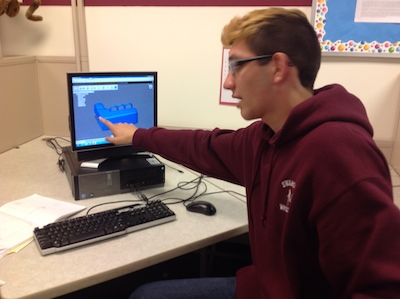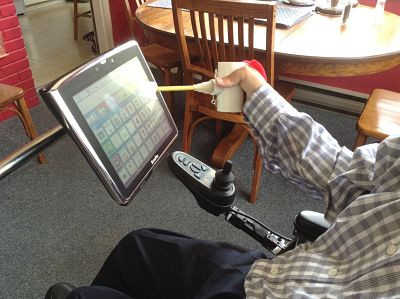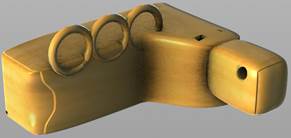STEM | Features
Eighth-Graders Create Device for Disabled Student Using 3D Design Software and 3D Printing

It all started when Arlington, VA, resident Aneesh Chopra, the first chief technology officer of the United States appointed by President Barack Obama, tweeted at Carl Bass, the president and CEO of Autodesk. Within a year of Chopra's tweet asking how the Arlington Public Schools could access the company’s latest design software, Autodesk and the district were signing a memorandum of understanding that laid out the company’s pledge to get the schools up and running with technology including Autodesk Fusion 360.
Dan Banach, education programs manager for Autodesk, said that a couple of Arlington schools really “dove in” to Fusion 360, but educators and students at Swanson Middle School integrated the design software into their curriculum in a particularly innovative way.
 Kris Martini, the director of career, technical and adult education for Arlington Public Schools, told THE Journal that one educator at Swanson was approached by a colleague looking for a way to replace the PVC pipe with a pencil in it (shown at left) that her son Stephen was using to operate the communication device on his wheelchair. The request gave technology instructor Jim DeMarino an idea for a classroom project that would take advantage of the district's new technology and help a member of their community.
Kris Martini, the director of career, technical and adult education for Arlington Public Schools, told THE Journal that one educator at Swanson was approached by a colleague looking for a way to replace the PVC pipe with a pencil in it (shown at left) that her son Stephen was using to operate the communication device on his wheelchair. The request gave technology instructor Jim DeMarino an idea for a classroom project that would take advantage of the district's new technology and help a member of their community.
Asked to solve this real-world problem, a class of eighth-grade engineering students set to work the same way they always do: brainstorming, sketching and talking with each other about their design options. Once they came up with their ideas, the students moved to the classroom computers to begin designing their models using Fusion 360.
Martini said that using Autodesk gave students freedom in the early stages of the design process. “They are kind of drawing it and pulling it," he said, "and they’re not really concerned with ‘Well how do I draw this?’ because they have this kind of piece of clay and they can mold their design from that.” Once the students had designs ready, Martini said, they could "take it to our [MakerBot] 3D printer and print that design out and actually hold it and touch it and see how it works and make modifications very quickly.”
Before they got Autodesk’s software, these students had used materials like cardboard and wood to construct their models. Martini noted that this mechanical design process had its drawbacks: Cutting things out and making accurate measurements can be more difficult for some students than others. With a digital design platform like Fusion 360, students can rely on the computers’ precision instead of trying to emulate it by hand. Martini also said that his students are now learning how to deal with the different challenges that 3D printing presents, such as where to put supports as models cool and how to account for the slumping that occurs after printing.
 After testing and redesigning their prototypes (one of which is pictured at left), the students presented their designs to Stephen’s mother and his occupational therapist, who selected the top three designs they felt would work best. The class ended the 2013-2014 school year looking for the top design and will pick up where they left off this fall.
After testing and redesigning their prototypes (one of which is pictured at left), the students presented their designs to Stephen’s mother and his occupational therapist, who selected the top three designs they felt would work best. The class ended the 2013-2014 school year looking for the top design and will pick up where they left off this fall.
Martini said that the project has had a powerful impact on his students. “We can give them a lot of activities and projects to do, but seeing that they’re changing someone’s life is a unique experience.”
Districts looking to implement 3D design software can apply to Autodesk's Design the Future program, which provides high schools and middle schools in the U.S. and Canada with free software, curricula and training.
Autodesk's Banach said that the program provides students the same software that the company's commercial clients use. “This means that the tools the students are learning on today are the exact tools that they are going to use when they are out in the industry."
Banach concluded, "You probably don’t hear a lot of middle school students say, 'I want to be a mechanical engineer,' because that’s just not what they’re thinking about. But we're finding these students early enough that if they start thinking about just solving problems, this can be just one of the tools to help them do that. Now they're being exposed to career opportunities that they would have had no idea about."
About the Author
Julia Sufrin is a contributing writer based in Los Angeles.